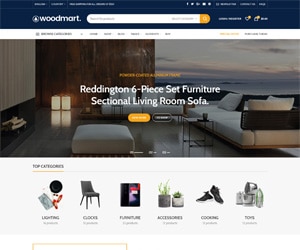Indoor gardening is a fantastic way to bring greenery into small spaces, offering not only aesthetic appeal but also numerous health benefits. With the right plants and proper care, even the tiniest apartments or compact homes can flourish with lush greenery. This guide provides comprehensive tips on how to start and maintain a thriving indoor garden, including plant selection, arrangement, and essential care techniques for various conditions.
1. Choose the Right Plants for Indoor Gardening
Small spaces often lack ample sunlight and can have varying humidity levels, so selecting plants suited to these conditions is key to successful indoor gardening.
- Low-Light Plants: Snake plants, ZZ plants, and pothos are excellent for areas with limited sunlight. They thrive in low light and require minimal care, making them perfect for beginners.
- Humidity-Loving Plants: Boston ferns, peace lilies, and calatheas enjoy humidity and are ideal for bathrooms or kitchens where moisture levels are higher.
- Air-Purifying Plants: Spider plants, rubber plants, and peace lilies are known for their air-purifying abilities, helping to remove toxins from indoor air.
- Compact Herbs: Basil, mint, and thyme are not only small and manageable but also provide fresh ingredients for cooking. Herbs thrive with bright light, so a windowsill or balcony can be a perfect spot for them.
2. Use Vertical Space Efficiently
When horizontal space is limited, take advantage of walls, shelves, and vertical gardening solutions.
- Wall-Mounted Planters: Vertical planters or shelves can hold multiple pots without taking up floor space, ideal for small apartments.
- Hanging Planters: Use ceiling hooks or wall brackets to hang planters. Hanging plants like spider plants, philodendrons, and ferns can create a lush, cascading effect.
- Tiered Stands and Racks: These maximize floor space and make a beautiful display. Place taller plants at the bottom and smaller ones on top for easy access to light.
3. Select the Right Containers
Choosing the right container is essential for healthy indoor plants. Here are some key tips:
- Drainage: Look for pots with drainage holes to prevent root rot. Place a saucer or tray underneath to catch any excess water.
- Material: Ceramic or clay pots offer better air circulation but are heavier. Plastic pots are lighter and easier to move around but may retain moisture longer.
- Self-Watering Pots: These are ideal for beginners and busy individuals as they provide a steady water supply to the plants.
4. Optimize Lighting Conditions
Since natural light is limited indoors, consider these lighting tips:
- Place Plants Near Windows: East-facing windows are ideal for most indoor plants as they provide soft, morning sunlight. West-facing windows offer stronger afternoon light, suitable for sun-loving plants.
- Use Grow Lights: LED grow lights are an effective solution for low-light homes. Place them a few inches above the plants, and follow a light schedule to mimic natural sunlight.
- Rotate Plants Regularly: To ensure even growth, rotate plants every few weeks. This helps them receive light from all sides, preventing them from growing unevenly.
5. Watering Techniques for Indoor Plants
Indoor plants often require less water than outdoor ones due to lower evaporation rates. Here’s how to manage indoor watering:
- Check Soil Moisture: Insert your finger into the soil up to the second knuckle; if it feels dry, it’s time to water. Use a moisture meter for more accurate readings.
- Avoid Overwatering: Overwatering is a common mistake that can lead to root rot. Ensure the pot has proper drainage and wait until the soil dries out between waterings.
- Humidity Control: Some indoor plants, like ferns and calatheas, thrive in higher humidity. Mist them lightly with water every few days or place a water tray nearby to increase moisture.
6. Fertilize for Healthier Growth
Indoor plants may not receive as many nutrients as outdoor plants, so they need regular feeding.
- Use Indoor Plant Fertilizer: Choose a balanced liquid fertilizer specifically designed for houseplants. Apply every 4–6 weeks during the growing season (spring and summer).
- Avoid Over-Fertilizing: Too much fertilizer can lead to nutrient burn. Always follow the instructions and dilute the fertilizer if necessary.
- Compost for Nutrients: If you prefer organic methods, add a small amount of compost to the soil to boost nutrient content.
7. Control Indoor Pests Naturally
Indoor plants can sometimes attract pests, such as spider mites, aphids, or fungus gnats.
- Regularly Inspect Plants: Check the underside of leaves and soil for signs of pests. Early detection can prevent infestations.
- Natural Remedies: Use insecticidal soap or a mixture of water and dish soap to remove pests. Neem oil is also a safe, natural solution.
- Isolate New Plants: When introducing new plants, keep them separate from others for a week to ensure they are pest-free.
8. Repotting Tips for Indoor Plants
Repotting helps plants grow by providing fresh soil and more room for root expansion.
- When to Repot: Generally, repot every 1–2 years or when roots start to outgrow the pot. Signs include roots poking out of the drainage holes or slow growth.
- How to Repot: Choose a pot one size larger than the current one, add fresh potting soil, and gently loosen the root ball before placing it in the new container.
- Use Appropriate Potting Mix: Different plants have unique soil needs. Succulents prefer sandy, well-draining soil, while ferns thrive in a moisture-retentive mix.
9. Seasonal Care Adjustments
Indoor plants require adjustments based on seasonal changes, especially in colder months.
- Reduce Watering in Winter: Plants typically grow slower in winter, so they need less water.
- Maintain Humidity: Indoor heating can dry the air in winter. Use a humidifier or mist plants regularly to maintain ideal humidity levels.
- Watch for Temperature Changes: Keep plants away from drafts or direct heat sources like radiators, which can stress them.
10. Add Style with Indoor Plant Décor
Indoor plants can enhance your décor with minimal effort, transforming spaces into natural oases.
- Group Plants: Create plant clusters with different heights and textures for a visually appealing display.
- Statement Plants: A large fiddle leaf fig or monstera makes an eye-catching focal point in any room.
- Decorative Pots and Stands: Choose containers that match your interior style, whether modern, rustic, or bohemian, to blend seamlessly with your décor.
By following these tips, you can create a vibrant indoor garden that thrives in small spaces, adding both beauty and well-being to your home. Indoor gardening is an enjoyable and fulfilling hobby that connects you to nature, even within the walls of your home.



